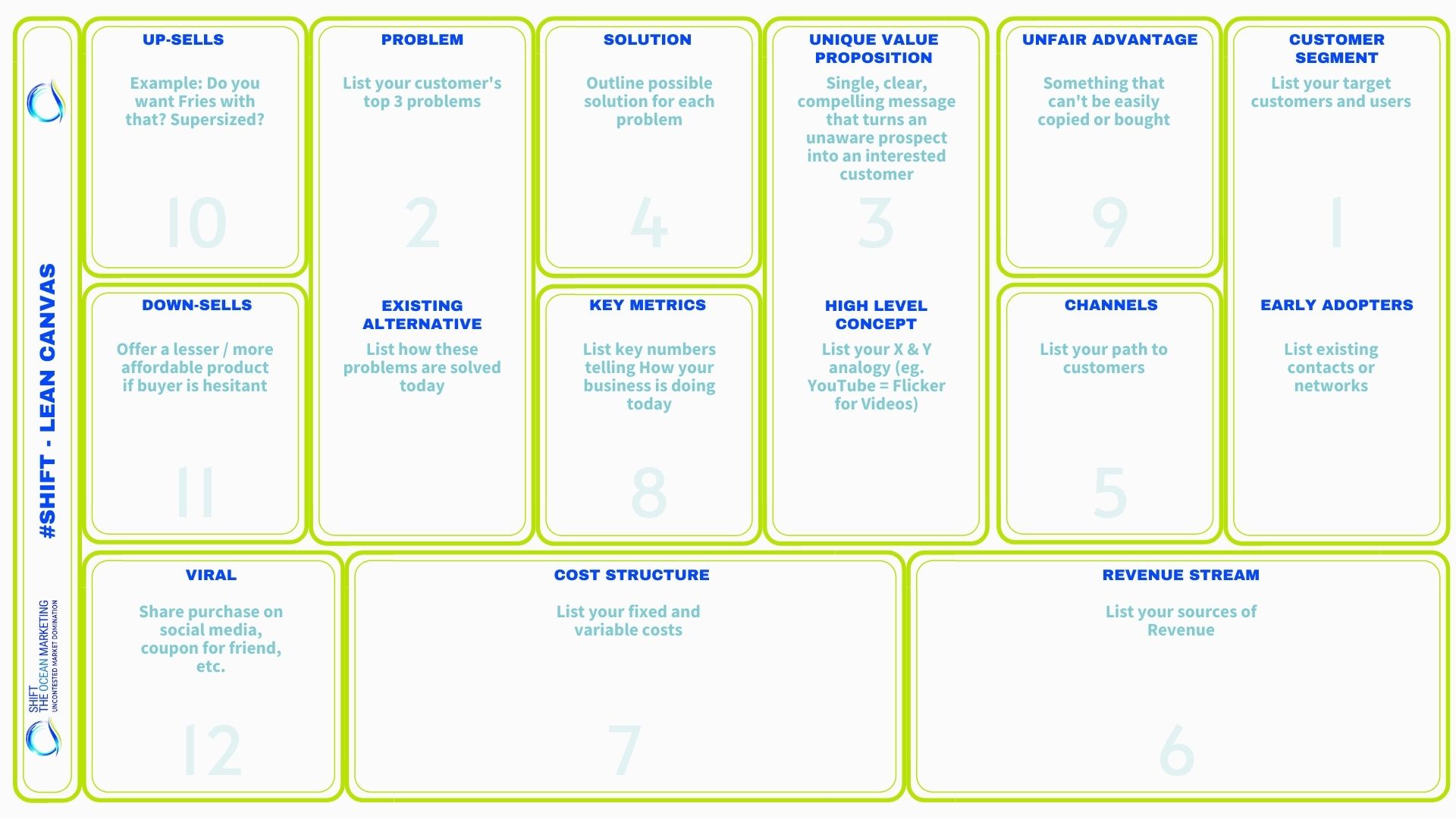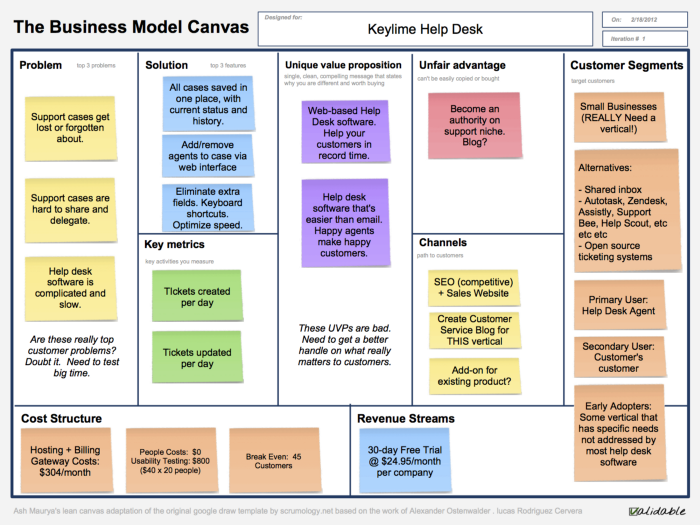As an entrepreneur, one of the most important tasks you can perform is getting your idea(s) out from your head into a tangible format so that you can communicate that with others.
The Customer Segment, Problem (#2), and Solution (#4) can be viewed as intrinsically connected — without a Customer Segment in mind you can’t think of their problems and solutions, and visa-versa.
It’s easiest to fill out one sheet for each Customer Segment so it’s easy to keep track of which problem/solution goes with with Customer Segment.
2. ProblemEach customer segment you are planning to work with will have a set of problems that they need to have solved. In this box list one to three high priority problems which plagues this Customer Segment. Without a problem to solve, you don’t have a product/service to offer.
Sometimes the problem your think your product is solving isn’t the REAL problem. Sometimes you have to look deeper to understand the real pain your Customer Segment is experiencing. It can be useful to look at competitors sales pages to see what problems they are describing and check keyword tools to see which terms have more searches.
3. Unique Value PropositionA value proposition is a promise of value to be delivered. It’s the primary reason a prospect should buy from you. Think about why are you different from your competition, and why should this Customer Segment should buy/invest time in you — further reading: Useful Value Proposition Examples (and How to Create a Good One)

4. Solution
The solution is why you invented your product or service in the first place. There should be at least one solution for each problem you listed.
5. Channels
Channels are ways for you to get your message in front of this Customer Segment. Channels can be email, social groups, paid ads, guest blogging, content marketing, live streaming, video marketing, trade shows, radio & TV, webinars etc. Focus on where your Customer Segment hangs out and be specific.
6. Revenue Streams
How you price your products and services will be impacted by startup costs and ongoing overhead, however, it’s quite common for startups to lower their cost, or even offer it for free to gain traction. However, you must be careful that it does not set a precedence and diminish the value of your offerings. Further reading: Simple pricing strategies for your products or services, the lean way!
7. Cost Structure
Here you should list all the start-up costs for taking this business to market. Also consider what your monthly recurring costs will be. You can then use these costs and potential revenue streams to calculate a rough break-even point.
8. Key Metrics
It’s important to map your funnel, from educating your prospects through to purchase. At each stage determine key aspects that will help you understand how well your funnel is working, and where there may be leaks, so you can get them plugged. It’s helpful to have a seasoned marketing veteran help to determine valid key metrics, and help set goals along the way for the first year so you can tell if you are on track to break even or make a profit.
A good model to help with this is Dave McClure’s ARRRR (aka Pirate Metrics) — further reading: Startup Metrics for Pirates
9. Unfair Advantage
This is the most difficult to block to answer. “The only real competitive advantage is that which cannot be copied and cannot be bought.” — Jason Cohen. Here is a great definition of unfair advantage: Unfair advantage can be insider information, a dream team, getting expert endorsements, existing customers etc. Think about what you have that no one else can buy.
10. Up-sells
An upsell involves asking the customer to upgrade their original purchase, or buy a more expensive product instead of the one they originally wanted to purchase, increasing the overall profit of the sale.
For this block, consider products that you have in your arsenal that could be used for upsells. These products should be tightly aligned with the original product offered. If nothing exists consider what you could create with little effort that would allow you to capitalize on these benefits.
11. Down-sells
A downsell is offered when the person tries to leave the sales page. A popup offers them a smaller product, a free product, or a percentage off the original product offered. At a minimum, a successful downsell allows you to capture the visitors email address so you can market to them further. At best it turns what would have been a lost sale into a purchase.
Again, for this block, consider products that you have in your arsenal that could be used fora downsell, or what could be created with little or no effort.
12. Viral
Consider how this purchase can be made viral. The easiest thing is to offer the purchaser to share their purchase on social media, however, if you can create more virality, perhaps through gamification, then your sales can potentially be multiplied.
Now it’s your turn. Right click and save to download a blank copy of our lean canvas and start to flesh out your plan.
Trying to fill in your lean canvas the first time can be tricky. Here’s a sample one to help you wrap your head around it better.

